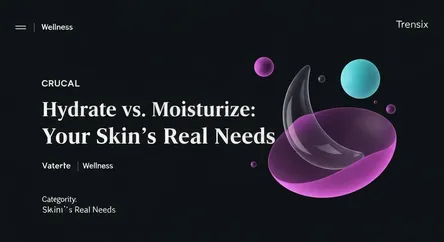Wellness
Hydrate vs. Moisturize: Your Skin's Real Needs

Learn the crucial difference between hydrating and moisturizing to choose the right products and achieve healthy, glowing skin.
What is it?
In skincare, hydration and moisture are not the same. Hydration refers to the water content within your skin cells. Hydrating ingredients, known as humectants like hyaluronic acid and glycerin, absorb water from the air or deeper skin layers and draw it to the surface. On the other hand, moisture relates to the skin's natural oil barrier, which prevents that water from evaporating. Moisturizing ingredients, such as oils and butters, create a seal on the skin's surface to lock in hydration and protect the skin barrier. Essentially, hydration adds water, while moisture locks it in.
Why is it trending?
The distinction is trending as consumers become more educated about skincare ingredients and desire personalized routines. The rise of trends like "skin flooding"—a technique of layering multiple hydrating products—has gained massive popularity on social media. This focus on deep hydration addresses common concerns like dullness and fine lines, promoting a "glow from within" look. People are moving beyond a one-size-fits-all approach, seeking to understand if their skin is dehydrated (lacking water), dry (lacking oil), or both, to treat it more effectively.
How does it affect people?
Knowing the difference directly impacts product choices and skin health. Dehydrated skin, which lacks water, often looks dull and shows more prominent fine lines. This can affect any skin type, even oily skin. Using hydrating serums can restore plumpness. Dry skin, which lacks oil, may feel rough, flaky, or tight because its protective barrier is compromised. It requires moisturizers to repair that barrier and prevent water loss. By correctly identifying their skin's needs, people can build more effective routines, leading to a balanced, healthier, and more radiant complexion.